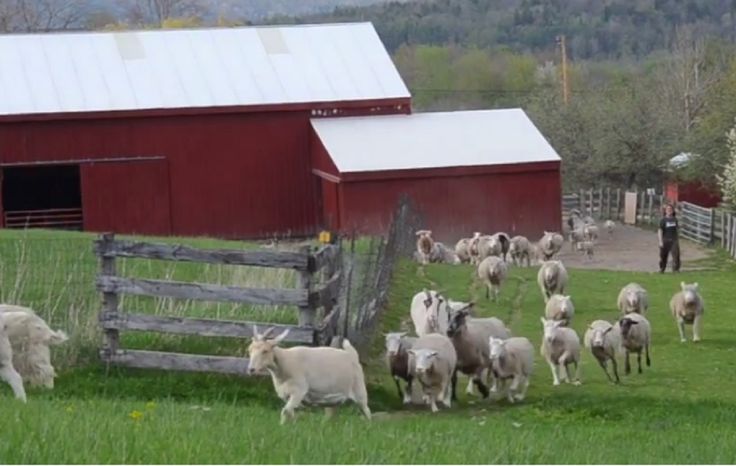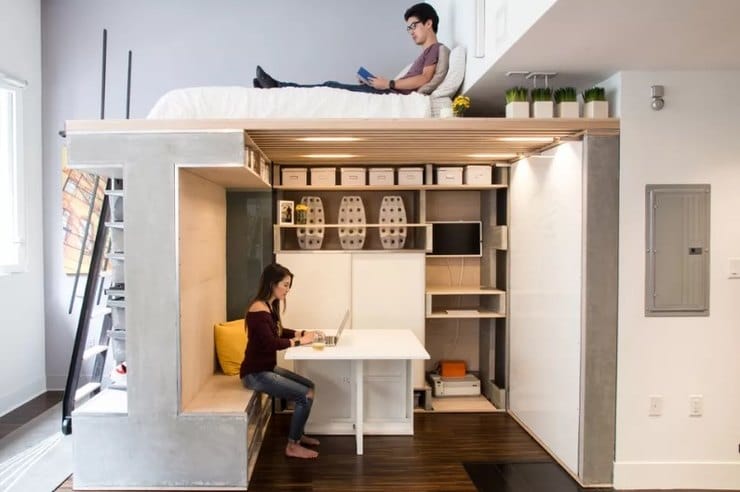뉴스&스피킹(영자신문)
하루 10분이면 영어에 대한 두려움을 극복하고 누구나 유창하게 영어를 구사하실 수 있습니다.
-
 Small Farm Animals Are Growing in Popularity Americans are showing more interest in owning unusually small cows, goats, donkeys and other small farm animals.
Small Farm Animals Are Growing in Popularity Americans are showing more interest in owning unusually small cows, goats, donkeys and other small farm animals.
These animals are cute. They require less food and space. And they might even help cut the grass.
People who farm for fun are known as hobby farmers. They are looking for easy-to-raise farm animals. Some just like the idea of having a little pig or a small sheep as a pet.
The word for something that is unusually small is miniature.
Animal breeders say sales of these little farm animals have grown since the COVID-19 pandemic. At that time, more people started raising chickens at home for fun and fresh eggs. Like chickens, mini farm animals appeal to beginners who want to try a rural lifestyle.
Brian Gazda has a small farm in the western state of Idaho. He runs a YouTube channel called "Hobby Farm Guys" with two friends. Gazda said a lot of people do not have a large piece of land, but if they have a small area, “they can keep a miniature cow or a few miniature goats."
Martin Fysh works for Tractor Supply Company. He said social media has brought attention to mini farm animals. But Fysh thinks their popularity also shows a natural path among customers who started out by raising a few chickens.
"They're seen as part of the extended family," Fysh said.
Some owners of mini farm animals turn their hobbies into money-making activities. They show the animals to visitors, breed animals, and write about their farming experiences.
But newcomers to these activities need to weigh the pros and cons, or the good and bad effects, of hobby farming, Gazda and other hobby farmers said. Among the problems is the rising cost of miniature farm animals. While they are cute, they can also be aggressive.
Mini goats
Brittany Snow is a high school English teacher in Florida who owns several small-sized Nigerian dwarf goats. She dreamed of living on a farm. Her family recently moved to a rural area.
Thirty-two-year-old Snow started with four Nigerian Dwarf goats. Snow expected them to produce milk right away, but she learned that is not the case.
Angelia Alden is a business operations manager for the Miniature Dairy Goat Association. She said many people who buy mini goats sell them after a few years because their care presents problems and costs they did not expect. Rising animal feed costs can be one problem, as is finding farm animal medical care.
Mini cows and donkeys
The mini farm animals can also be heavy. Some of the popular miniature animals on social media are cows that can weigh between 220 and 270 kilograms.
Twenty-eight-year-old Allie Sine started her own business breeding and selling mini cows in 2020. Social media videos showing some of her mini cows have gotten millions of views. Last year, she sold about 190 young cows. Each animal sold for between $2,000 and $30,000. "Everything just skyrocketed," Sine said.
Mini donkeys
Kim Furches owns a farm with her husband, Ken, in West Jefferson, North Carolina. She has found similar success. Furches said they bred mini donkeys for about 20 years. Before the pandemic, they would usually sell about eight donkeys per year for less than a thousand dollars each. They now sell about 20 per year. The last mini donkey sold for $7,500, Furches said.
Sheep follow her around
Earlier this year, Jamie Campion, who is 41, and her husband, Jeff, bought two Southdown Babydoll sheep from a local breeder near their home in Thompson's Station, Tennessee. The animals cost $800 each.
Jamie Campion said the sheep have become good at keeping their grass short. But more often, the sheep give her joy as would other pets. Once she took them for a walk in the snow. "They just followed right behind," she said. "There's a whole sheep and shepherd relationship.”
I’m Jill Robbins.View -
 Scientists Propose Idea to Warm Mars The idea of turning Mars into a livable world for humans is a common element of science fiction. But could such an action be done in real life?
Scientists Propose Idea to Warm Mars The idea of turning Mars into a livable world for humans is a common element of science fiction. But could such an action be done in real life?
Scientists are now proposing a new method to warm up Earth's planetary neighbor. The idea involves putting engineered particles made of iron or aluminum into the atmosphere. The goal is to trap escaping heat and direct sunlight toward the Martian surface.
The proposed idea would be to increase the natural greenhouse effect on Mars and raise its surface temperature by around 28 degrees Celsius over ten years.
Such a change alone would not make Mars livable for people. But the scientists who developed the idea see it as a possible first step.
Edwin Kite of the University of Chicago helped lead the study that appeared recently in the publication Science Advances.
Kite described the process of terraforming – meaning to change a planet’s environment to be more like Earth. "For Mars, warming the planet is a necessary, but insufficient, first step. Previous concepts have focused on releasing greenhouse gases, but these require large amounts of resources that are scarce on Mars," he said.
Kite added that climate modeling suggests the new idea of using engineered particles to warm Mars’ atmosphere could work better than previous ideas. Kite explained that the work is important because it presents a possible method that could help future exploration plans.
NASA has sent robotic vehicles to explore the Martian surface and the InSight Lander to study the planet's interior. The U.S. space agency's Artemis program aims to put astronauts in the coming years on the moon’s surface for the first time since 1972 in preparation for possible future human missions to Mars.
There are several barriers to human settlements on Mars. They include a lack of breathable oxygen, harmful ultraviolet radiation, salty soil, and dust storms that sometimes cover much of the planet. And Mars’ cold temperatures are a serious issue.
The median Martian surface temperature is about minus-65 degrees Celsius. With its thin atmosphere, solar heat on the Martian surface easily escapes into space. The proposal would aim to permit liquid water to exist on the surface of Mars, which has water in the form of ice at its polar areas and its subsurface.
The scientists proposed continuously releasing tiny particles, called nanorods, into the atmosphere at a rate of about 30 liters per second for years.
Samaneh Ansari of Northwestern University in Illinois is the study’s lead writer. Ansari said, "The idea is to either ship the material or better yet, ship the manufacturing tool and make the nanorods on the planet since iron and aluminum are abundant on the surface of Mars.”
The researchers are mindful of the possibility of unintended consequences in terraforming another world. Scientists, for instance, are eager to learn whether Mars has held life in the past - or perhaps currently, in the form of subsurface microbes.
Kite suggested that the costs and benefits of releasing nanorods are uncertain. For example, he said if Mars’ soil has compounds that are harmful to life from Earth, then the benefit of warming Mars is zero.
I’m John Russell.View -
 Work, Sleep Well in a Small Place From VOA Learning English, this is the Health & Lifestyle report.
Work, Sleep Well in a Small Place From VOA Learning English, this is the Health & Lifestyle report.
Working from home in a small apartment is fine during the day. But when nighttime comes, it may be more difficult to turn off work and get a good night’s sleep.
This can be especially difficult in a studio apartment. In a studio apartment, the living room, kitchen and sleeping area are all in one room. These kinds of apartments are common in large cities with a high cost of living.
With electronics, kitchen items, clothes and books all in one space, it can be hard to create a restful place for sleep.
Kim Cook, a reporter for the Associated Press, asked sleep experts and interior design experts for advice on how to work productively and sleep well in a small one-room area.
Be honest about how you live
Everyone needs good sleep to stay healthy.
“The primary rule, maybe the only rule of small space design, is people have to be honest about how they really live,” says Olivia Hosken. She is deputy managing editor of House Beautiful.
She adds that when you have limited space, you need furniture that works well in the room.
A good bed is important for good sleep
She suggests spending money on a high-quality bed. Even better is a high-quality sleep sofa that can double as a bed and couch. She does not suggest big tables or chairs that you may not use.
Andrea Morris is an interior designer with Lancaster Place Interiors in Wilmington, North Carolina. For studio apartments, she likes wall beds. These can be folded up next to a wall when not in use.
They are better known as Murphy beds, named after William Murphy. He came up with this idea in 1900 while living in his own studio apartment in San Francisco, California.
Create a sleep area
To separate your sleep area from the rest of the apartment, you can purchase a freestanding screen or room divider. And as much as you can, keep your sleep area strictly for sleeping, experts say.
Jeff Kahn is co-founder of the Chicago-based sleep-research company Rise Science. His company developed a sleep-tracking app called Rise. His suggestion is to “avoid doing work or anything stressful from your bed.” He said that this helps the brain connect your bed with only sleep rather than wakefulness and work.
However, that is not always possible. If you use your bed during the daytime, you can do small things to keep daytime tasks and sleep separate. Lisa Strauss is a psychologist and expert in sleep disorders. She suggests using one side of the bed for reading and the other for sleeping. You can also bring out special blankets and pillows used only for sleeping.
Freshen the air. Lower the lights. Cut the noise.
Kahn also suggests keeping a clean, peaceful environment. For starters, he says to make sure the air flow is good.
“Make sure your space is well ventilated, and consider an air purifier,” says Kahn. He adds that this is especially important if you cook and sleep in the same place.
Another interior expert is Mia Ingui. She is editor at Spruce, a home design website. She suggests using calming smells like lavender or chamomile at bedtime, to “set the tone for restful sleep.”
Also, be sure that computer, TV, and other electronic screens are turned off. In a small room, these devices are probably a short distance from the bed. Their light at night can affect our internal clocks, or circadian rhythm.
Do not forget about the sounds these devices make. If the buzz of nearby devices, appliances, or street sounds keep you awake, consider a noise machine. Ingui likes the Hatch Restore, a “sunrise lamp” that provides soothing sounds and lights up slowly in the morning. You can also buy noise cancelling curtains. These cut down on outside noises.
Keep things clean and organized
Andrea Morris, the home designer, says one thing to avoid when it comes to studio living is leaving beds unmade.
“It’s amazing how much better you feel after a hard day entering a space with a made bed,” she said.
At night, she suggests putting away electronics. Side tables with plugs and ports for electronics help you store devices and keep things tidy – or organized and clean. This is another example of choosing furniture that has multiple uses.
Choose multi-use, storable bedding
If it difficult to control your studio apartment’s heating and cooling, Ingui recommends choosing materials for bedding that let the skin breathe. Such materials can keep you cool in warm weather and warm in cooler temperatures.
She also suggests buying several pieces of bedding that are easy to store rather than big, bulky blankets. Studio apartments often do not have a lot of storage.
With some thoughtful choices, your small space can have the feeling we all want from home life: calm, clean and good for both working and sleeping.
And that’s the Health & Lifestyle report.
I’m Anna Matteo. And I’m Mario Ritter Jr.View -
 In Warmer Weather, South Korean Farmers Try Growing Bananas Ma Myung-sun had low expectations for the subtropical bananas he planted in a community farm in Seoul. He must use a greenhouse for part of the year to protect them from South Korea's cold winters.
In Warmer Weather, South Korean Farmers Try Growing Bananas Ma Myung-sun had low expectations for the subtropical bananas he planted in a community farm in Seoul. He must use a greenhouse for part of the year to protect them from South Korea's cold winters.
But warmer temperatures due to climate change have produced a welcome surprise in the form of flowers and fruit.
The land area where subtropical crops are grown in South Korea has increased from about 295 hectares in 2021 to 3,306 hectares in 2023.
South Korea’s state agricultural organization, the Rural Development Administration, reports that there are 67 banana farms in the south. And Ma is among a growing number of farmers experimenting with crops usually grown in a warmer climate.
"I want to try growing other tropical crops too. So, as you can see here, I have planted these papaya trees as well,” Ma said, pointing to a small papaya plant.
Ma opened up part of his family’s farm to people from the city in 2006. He is happy about his small success. But he worries about what it means for the climate.
"I feel that the climate crisis has become very serious," said Ma, who has been a farmer for 25 years.
South Korea lies in the temperate zone and has four seasons. But its climate appears to be getting warmer and wetter throughout the year.
The Korea Meteorological Administration reports that since 2012, the average yearly temperature has been continually rising. The average temperature last year of 13.7 degrees Celsius was the highest since its records began in 1973.
Plenty of rain
Rainfall during last year's rainy season was 660.2 mm nationwide, nearly two times the 356.7 mm annual average figure.
Kim Kwang-soo is a professor of Agriculture and Life Sciences at Seoul National University. Kim said South Korea's climate conditions were becoming more like subtropical areas, so it is important for farmers to find the right crop varieties for the climate.
Tropical and subtropical fruit are usually expensive in South Korea, so shoppers should welcome the less costly local produce.
"My kids love bananas. So, it would be good if we harvest bananas in this country," said Kim Ji-youn, who was purchasing imported bananas in a Seoul supermarket.
I’m Jill Robbins.View -
 More US Schools Are Taking Breaks for Meditation Poor communities need more help
More US Schools Are Taking Breaks for Meditation Poor communities need more help
Research has found that school-based mindfulness programs can help, especially in poor communities where students face higher levels of stress.
GreenLight Fund Atlanta helps school systems in the state of Georgia pay for a mindfulness program called Inner Explorer. That is the program used at Smith Elementary, where more than two-thirds of students are Black.
Joli Cooper is GreenLight Fund Atlanta’s executive director. Cooper said it was important to the group to support communities of color in the area.
“When you look at the numbers, unfortunately, in Georgia, the number of children of color with suicidal thoughts and success is quite high,” Cooper said. “When you look at the number of psychologists available for these children, there are not enough psychologists of color.”
Information from the CDC shows that Black youth have the fastest-growing suicide rate among racial groups. Between 2007 and 2020, the suicide rate among Black children and teens between the ages of 10 to 17 increased by 144 percent.
Nationwide, children in schools that serve mostly students of color have less access to mental health professionals than children in schools that serve mostly white students.
The Inner Explorer program guides students and teachers through five-to-10-minute sessions of breathing, meditation and reflection several times a day. The program is used at over 100 school systems across the U.S.
Teachers and administrators say they have noticed a difference in their students since they’ve added mindfulness into their daily activities.
Nine-year-old Aniyah Woods is a student in Kim Franklin’s class at Smith Elementary. Aniyah said the program has helped her “calm down” and “not stress anymore.” She added, “It made me feel peaceful.”
Malachi Smith, also 9, has used his exercises at home. His father helps guide him through meditation.
“You can relax… and when I calm myself down, I realize I am an excellent scholar,” Malachi said.
I'm Anna Matteo.View

